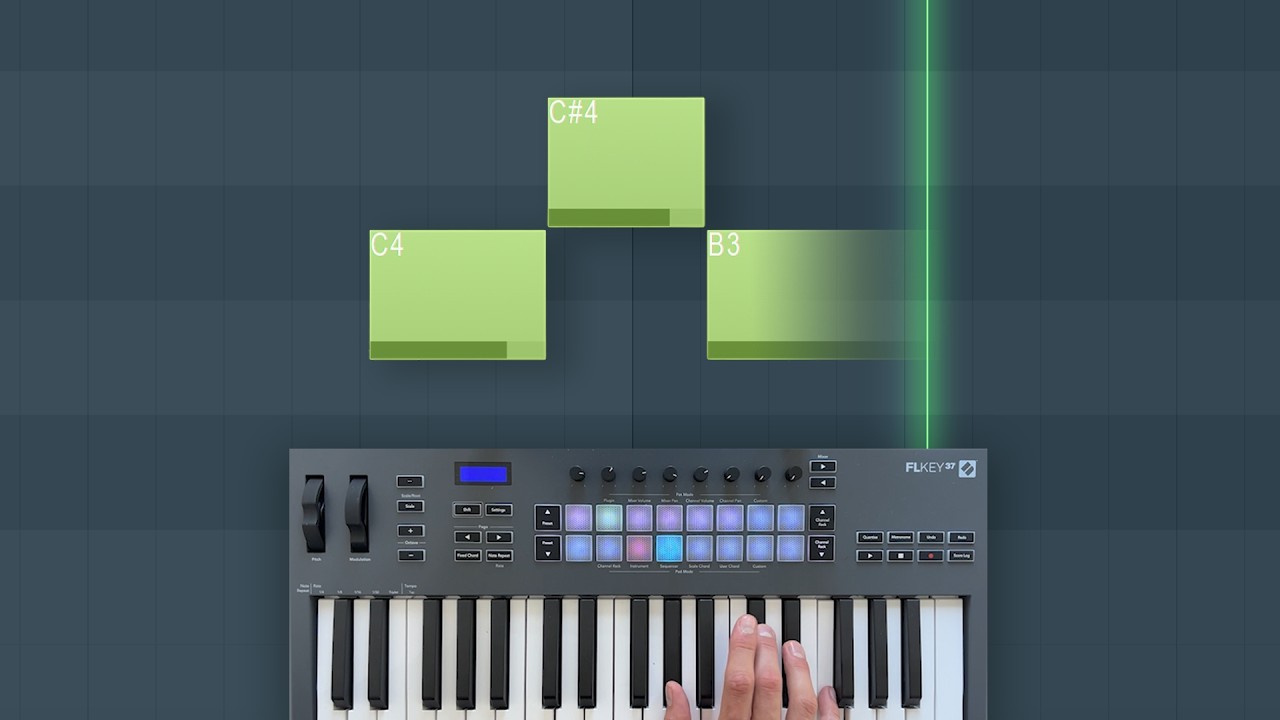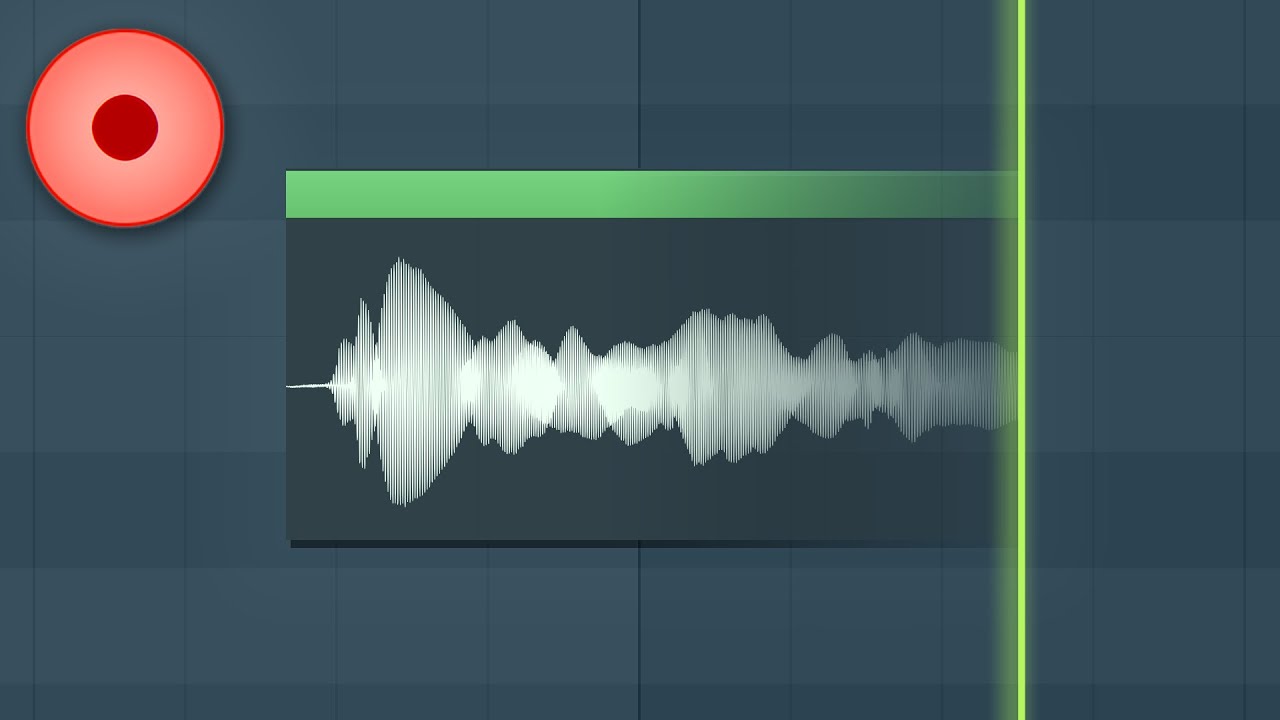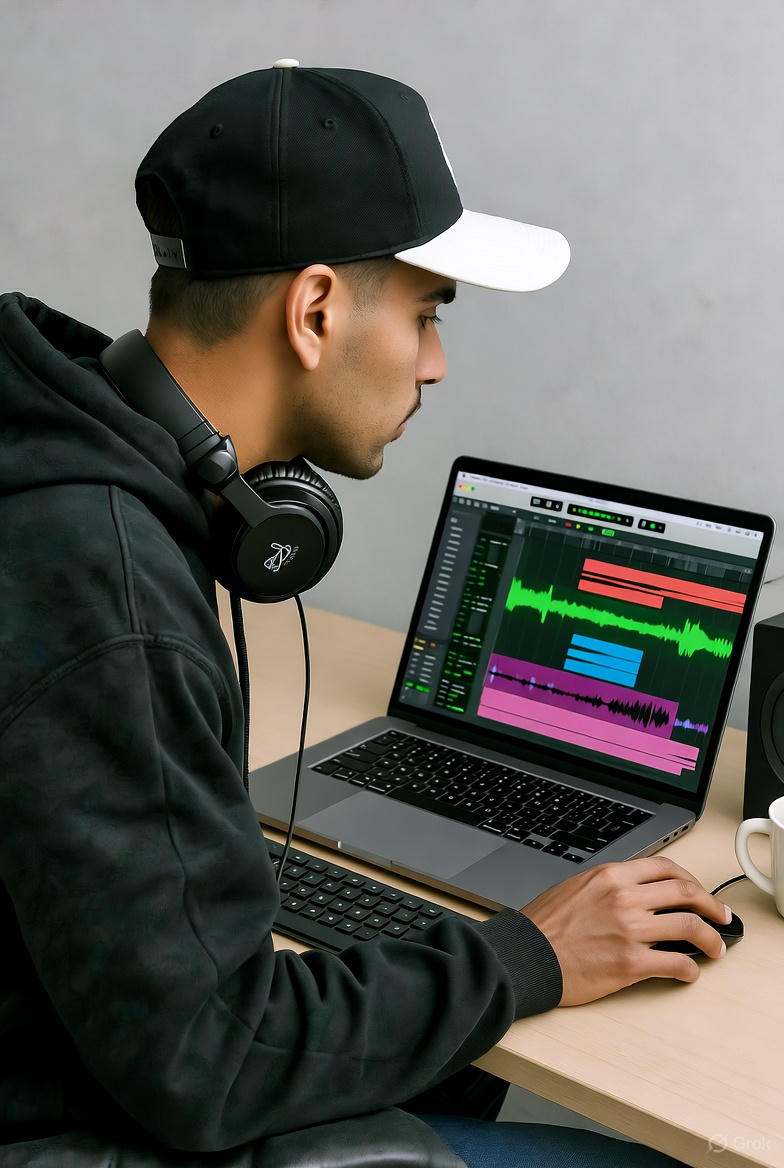!Let Us HELP YOU!
We have a lot of curated content on this blog.
Take this simple 20 second Quiz to Help You
Find The Exact Content You Are Looking For!
Trap beats are everywhere, from hip-hop anthems to global pop hits, shaping the sound of modern music. You might think this is just another American trend, but the genre’s reach is staggering. Trap has exploded beyond Atlanta and now drives styles from EDM to movie soundtracks, influencing music in over 150 countries. Most surprising, these beats are not just about heavy bass. They have become a vital tool for storytelling, creativity, and even economic opportunity for thousands of independent producers worldwide.
Table of Contents
-
What Are Trap Beats? Exploring The Genre’s Origins And Characteristics
-
How Trap Beats Come Together: Structure And Composition Insights
Quick Summary
| Takeaway | Explanation |
| Trap beats originated in early 2000s Atlanta. | Emerging from Atlanta’s hip-hop scene, trap beats reflect urban narratives of struggle and resilience. |
| Key elements include heavy bass and hi-hats. | Trap beats feature distinctive 808 bass drums and rapid hi-hat sequences that create their unique sound. |
| Trap beats have global musical influence. | This genre transcends hip-hop, impacting pop, EDM, and more, allowing versatile musical adaptation. |
| Producers can monetize trap beats. | The genre has opened economic opportunities, enabling independent artists to create high-quality music with limited equipment. |
| Complex rhythmic structures are essential. | Successful trap production demands understanding intricate rhythms and patterns, enhancing the genre’s compelling nature. |
What are Trap Beats? Exploring the Genre’s Origins and Characteristics
Trap beats represent a distinctive musical style emerging from the Southern United States hip-hop scene, characterized by heavy bass, sharp synthesizers, and rhythmic percussion patterns. According to Britannica, the genre originated in the early 2000s, reflecting urban narratives of street life and economic struggle.
Musical Composition and Sonic Characteristics
Trap beats are defined by several key musical elements that set them apart from other hip-hop subgenres. The primary characteristics include:
-
Heavy 808 Bass Drums: Thunderous, low-frequency kick drums that provide a powerful foundational rhythm
-
Rapid Hi-Hat Patterns: Quick, staccato hi-hat sequences often using rolled or triplet patterns
-
Synthesizer Melodies: Sharp, digital-sounding melodic lines that create tension and energy
These sonic components combine to create a distinctive sound that has become synonymous with contemporary rap and hip-hop production. The intricate rhythmic structures allow producers to craft beats that feel simultaneously aggressive and hypnotic.
Cultural and Musical Evolution
Trap music emerged from Atlanta’s hip-hop scene, initially representing stories of economic hardship and street experiences. Artists like T.I., Gucci Mane, and Young Jeezy were instrumental in popularizing the genre. Over time, trap beats transcended their original geographical and thematic boundaries, influencing global music production.
If you want to dive deeper into creating specific trap instrumentals, check out our guide on type beats for more detailed production techniques. The genre continues to evolve, blending elements from electronic dance music, pop, and global hip-hop styles, demonstrating its remarkable adaptability and ongoing cultural significance.
Why Trap Beats Matter in Modern Music Production
Trap beats have transformed contemporary music production, becoming a critical sonic language that transcends hip-hop and influences multiple musical genres. According to Billboard, trap has evolved from a regional style to a global musical phenomenon that shapes how producers approach rhythm and sound design.
Global Musical Influence
The significance of trap beats extends far beyond traditional hip-hop boundaries. Modern producers across various genres recognize trap’s unique sonic characteristics as essential tools for creating compelling music. Key areas of musical impact include:
-
Cross Genre Adaptation: Electronic dance music, pop, and even rock genres now incorporate trap beat elements
-
Digital Production Techniques: Trap beats have pushed innovative approaches to sound synthesis and rhythmic programming
-
Cultural Expression: The genre provides a powerful platform for storytelling and artistic representation
These beats represent more than just a musical style. They are a sophisticated method of musical communication that allows producers to convey complex emotional landscapes through intricate rhythmic structures.
Economic and Creative Opportunities
Trap beats have created significant economic opportunities for music producers. Check out our guide on creating type beats to understand how producers monetize these unique rhythmic approaches. The genre has democratized music production, enabling independent artists to create professional-grade instrumentals with minimal equipment.
Moreover, trap beats continue to drive innovation in music technology. Producers constantly push boundaries, experimenting with sound design techniques that challenge traditional musical conventions. This ongoing evolution ensures trap remains a dynamic and influential force in modern music production.
Key Elements of Trap Beats: Sounds and Techniques to Know
Trap beat production demands a sophisticated understanding of complex sonic elements and innovative sound design techniques. According to Sound on Sound, successful trap beats require precise technical skills and a deep understanding of rhythmic complexity.
Fundamental Sound Components
Trap beats are constructed using several critical sonic ingredients that define their unique character. These fundamental elements include:
-
808 Bass Drums: Powerful, low-frequency kick drums that provide deep, resonant foundation
-
Layered Percussion: Multiple drum samples strategically stacked to create depth and texture
-
Syncopated Hi-Hats: Rapid, off-beat rhythmic patterns that generate musical tension
Understanding how these components interact is crucial.
WEBSITE RESOURCES FOR MUSICIANS
To clarify the essential components and advanced techniques described for trap beat production, the following table summarizes both the fundamental sound elements and the key advanced production methods discussed in the article.
| Key Element or Technique | Description |
| 808 Bass Drums | Deep, low-frequency kick drums that create the beat foundation |
| Layered Percussion | Stacked drum samples to add depth and texture |
| Syncopated Hi-Hats | Rapid, off-beat patterns generating tension and groove |
| Pitch Shifting | Modifying pitch for unique sound variations |
| Time Stretching | Altering sample timing without affecting pitch |
| Automation Techniques | Controlling parameters dynamically for expressive sound movement |
| Digital Signal Processing | Using software plugins to sculpt and enhance sonic details |
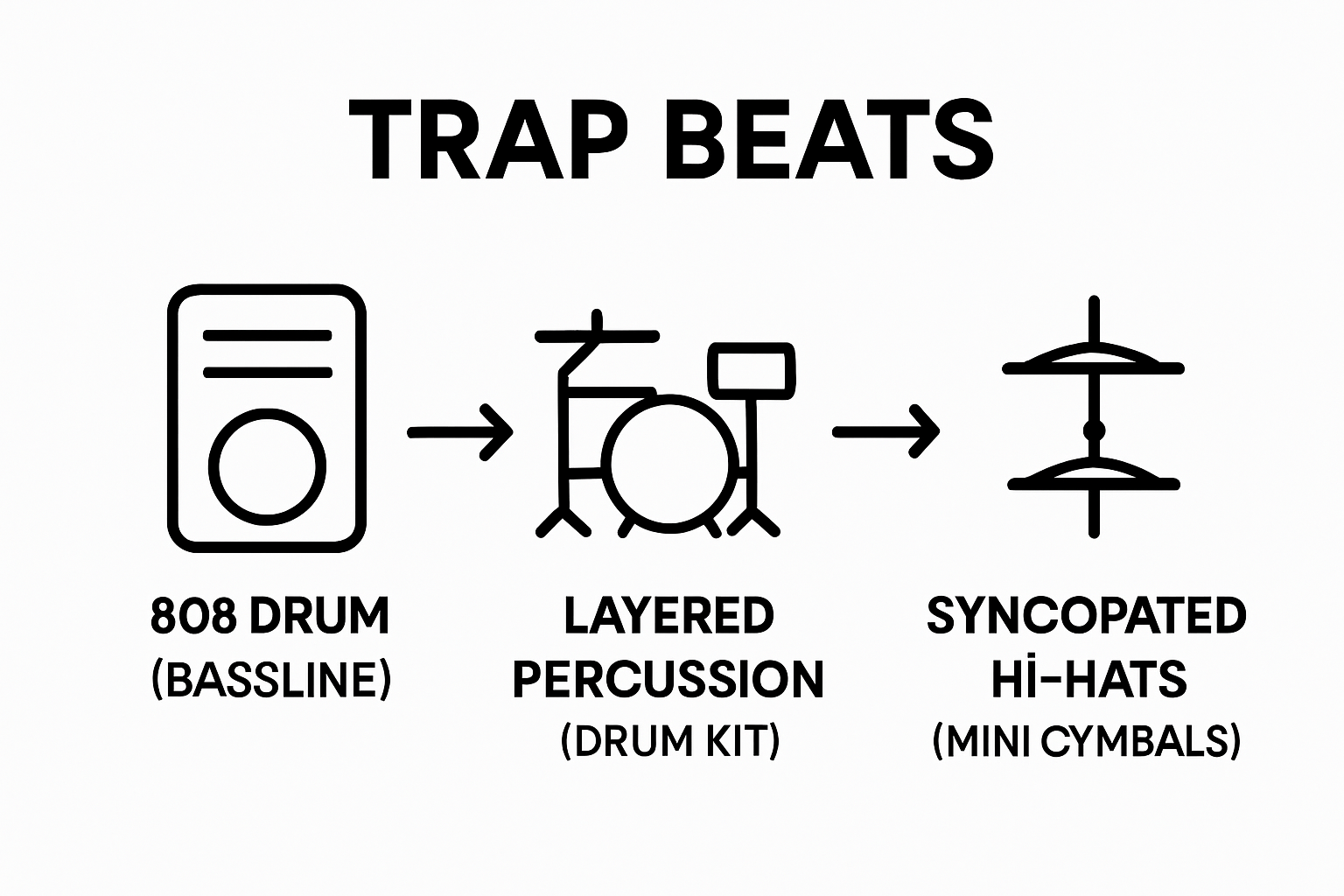 Producers must learn to balance these elements, ensuring each sound occupies its own sonic space while contributing to an overall cohesive rhythm.
Producers must learn to balance these elements, ensuring each sound occupies its own sonic space while contributing to an overall cohesive rhythm.
Advanced Sound Design Techniques
Beyond basic percussion, trap beat production involves sophisticated sound manipulation. Pitch shifting, time stretching, and complex automation techniques transform standard sounds into unique musical expressions. For an in-depth exploration of trap instrumental techniques, producers can experiment with unconventional sound processing methods.
Modern trap beat creation also emphasizes digital signal processing. Producers utilize plugins and software that allow granular control over sound characteristics, enabling them to craft beats that sound simultaneously aggressive and intricate. The goal is not just rhythm, but creating a sonic landscape that tells a story through sound.
How Trap Beats Come Together: Structure and Composition Insights
Trap beat composition is a nuanced art form that requires strategic layering and precise rhythmic engineering. According to Mix Magazine, successful trap productions demand a meticulous approach to sound arrangement and musical architecture.
Rhythmic Foundation and Pattern Design
At the core of trap beat construction are several fundamental structural elements that define the genre’s distinctive sound. Producers typically build beats using:
-
Kick and Snare Placement: Strategically positioned percussion that establishes the beat’s core groove
-
Tempo Range: Most trap beats operate between 70-110 beats per minute, creating a slow yet intense rhythmic feel
-
Syncopated Rhythmic Patterns: Complex beat subdivisions that generate musical tension and momentum
The interplay between these elements creates the signature hypnotic quality that makes trap beats so compelling. Producers must develop an intuitive understanding of how these components interact to craft authentic soundscapes.
Melodic and Harmonic Considerations
Beyond rhythmic construction, trap beats incorporate sophisticated melodic approaches. Synthesizer lines and harmonic progressions play crucial roles in defining the beat’s emotional landscape. Learn more about creating unique instrumental styles to understand how producers manipulate sound.
Modern trap beat composition frequently involves layering multiple sonic textures.
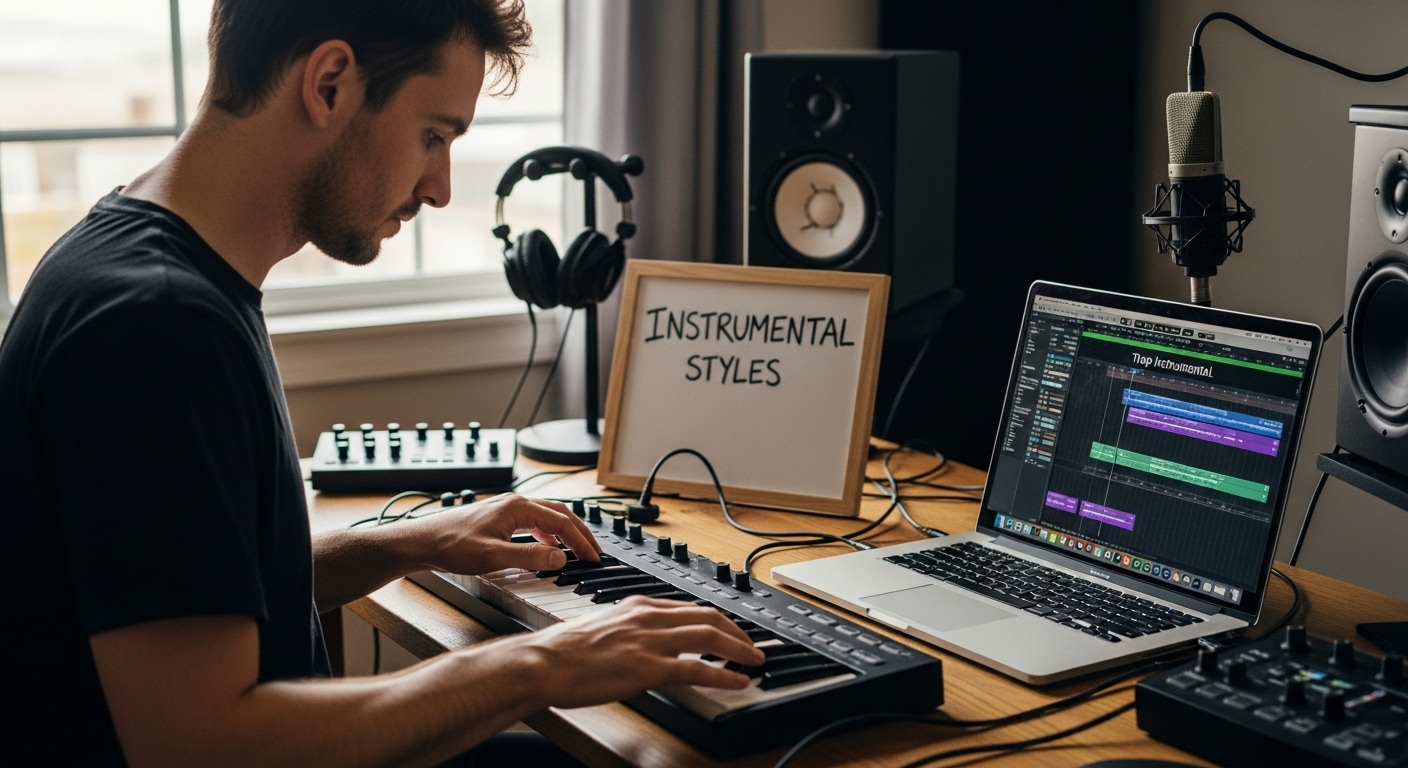 Producers blend digital synthesizers, sampled instruments, and processed sounds to create complex, immersive musical environments that transcend traditional genre boundaries. The goal is not just to create a rhythm, but to construct a complete sonic narrative that captures listeners’ attention.
Producers blend digital synthesizers, sampled instruments, and processed sounds to create complex, immersive musical environments that transcend traditional genre boundaries. The goal is not just to create a rhythm, but to construct a complete sonic narrative that captures listeners’ attention.
Real-World Applications of Trap Beats in Music Today
Trap beats have evolved far beyond their original hip-hop roots, becoming a transformative force across multiple musical genres and entertainment platforms. According to Rolling Stone, the genre’s influence extends well beyond traditional music production.
Genre Crossover and Musical Innovation
Today’s musical landscape demonstrates the remarkable versatility of trap beats. Artists and producers are continuously pushing creative boundaries by incorporating trap rhythmic elements into diverse musical styles:
-
Pop Music: Major pop artists integrating trap percussion and sound design
-
Electronic Dance Music: Trap-inspired rhythmic structures in EDM productions
-
Film and Video Game Soundtracks: Utilizing trap beat techniques for atmospheric scoring
The adaptability of trap beats allows musicians to create complex sonic experiences that transcend traditional genre limitations. Producers have discovered that the genre’s distinctive rhythmic patterns can add depth and intensity to virtually any musical composition.
Commercial and Creative Opportunities
Trap beats have become a significant economic and creative avenue for music producers. Explore innovative beat creation techniques to understand how contemporary producers monetize their skills. Streaming platforms and social media have further democratized trap beat production, enabling independent artists to reach global audiences with unique sound designs.
Moreover, trap beats continue to influence broader cultural expressions. From advertising soundtracks to digital content creation, the genre’s rhythmic complexity and emotional depth have made it an essential tool for storytelling across multiple media platforms. The ongoing evolution of trap beats represents not just a musical trend, but a dynamic form of contemporary artistic expression.
This table organizes the major real-world applications and cross-genre influences of trap beats as discussed, helping readers quickly see how trap has expanded beyond its origins into modern music and media.
| Application Area | Example Usage or Description |
| Pop Music | Trap percussion and sound design in mainstream pop hits |
| Electronic Dance Music (EDM) | Trap rhythmic structures used by dance music producers |
| Film and Video Game Soundtracks | Trap beats for atmospheric and energetic scoring |
| Advertising and Digital Content | Trap sounds used for commercial branding and storytelling |
| Independent Music Production | Accessible pathways for producers to reach audiences globally |
| Social Media Platforms | Trap beat-driven content for viral reach and artist promotion |
Take Your Trap Beat Production to the Next Level
Struggling to master the complex rhythms, punchy 808s, or layered hi-hats you just read about? Even with all the right sound elements and inspiration, turning your ideas into real, polished trap beats can feel overwhelming if you lack guidance or the right tools. Most producers want not just to understand trap beat essentials but to actually create tracks that stand out, monetize their beats, and use the latest DAW workflows—all without wasting hours on trial and error.
Get hands-on with every part of beat creation at How To Make Beats Blog. Explore our in-depth guides on type beats to unlock popular styles, or check out our walk-throughs for Ableton production tips and gear reviews to find your perfect setup fast. Start making professional trap beats today and discover how easy it can be to break through creative barriers. Visit https://howtomakebeatsblog.com now and take the next step from learning about trap beats to becoming a recognized creator.
Frequently Asked Questions
What are the key elements of trap beats?
Trap beats typically feature heavy 808 bass drums, rapid hi-hat patterns, and sharp synthesizer melodies, creating an aggressive and hypnotic sound.
How can I start making trap beats?
To start making trap beats, familiarize yourself with digital audio workstation (DAW) software, experiment with different sounds, and study the genre’s typical rhythmic structures and composition techniques.
What techniques are used in sound design for trap beats?
Producers often use techniques like pitch shifting, time stretching, and complex automation to manipulate sounds, alongside digital signal processing to create unique and intricate beats.
How do I create the right structure for a trap beat?
Begin with the rhythmic foundation by placing kick and snare drums strategically, maintaining a tempo typically between 70-110 BPM, and incorporating syncopated patterns to establish the desired groove and tension.

